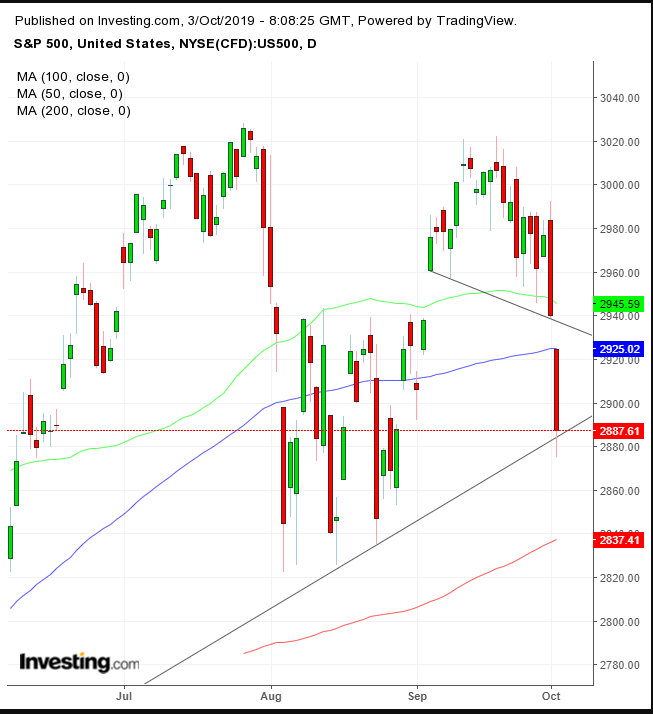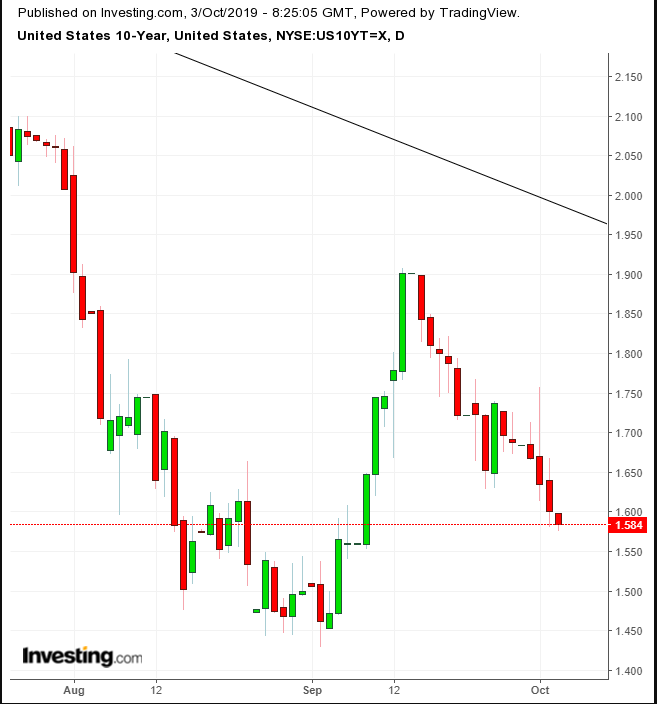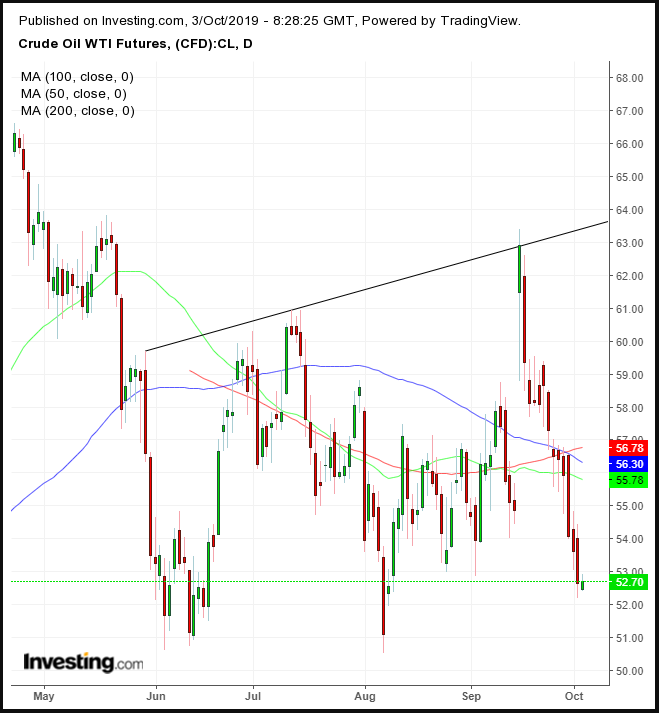Key Events
Futures on the S&P 500, Dow and Nasdaq 100 found a more stable footing this morning after U.S. shares suffered a steep selloff on Wednesday, as dismal new job and U.S. manufacturing data re-ignited fears of an economic slowdown.
ADP reported 135,000 new jobs, missing the 140,000 expectation and posting the smallest monthly gain in three months.
Coming hot on the heels of ISM figures that showed U.S. manufacturing activity hit the lowest level in 10 years last month, Wednesday’s data re-sparked panic selling—on concerns that the recession already taking hold in the manufacturing sector might be spreading to the broader market, particularly the labor market, which has been a bastion in the U.S. economy.

Today, SPX futures managed to pare some of yesterday’s tumble—which brought two-day losses to 3.00%—after finding support at the uptrend line since June, suggesting a pullback to retest the September top.
In Europe, an initial relief-rally on the STOXX 600, lost steam after new U.S. tariffs on European companies including Airbus (PA:AIR), luxury brands and drinks makers coming in line with expectations. Investors struggled to shrug off persistent trade and tariff worries, which sparked the pan-European index's worst performance since December on Wednesday (-2.7%).
In the earlier Asian session, regional markets ended in negative territory, except for Hong Kong’s Hang Seng, which sealed a 0.26% gain despite reports that the city will invoke emergency powers to ban face masks and thereby rein in public protests. Australia’s S&P/ASX 200 (-2.21%) and Japan’s Nikkei 225 (-2.01%) underperformed.
Global Financial Affairs
Yesterday, U.S. stocks took a dive on renewed recession fears, with the Dow Jones Industrial Average (-1.86%) hit the hardest, followed by the S&P 500 (-1.79%) and the NASDAQ Composite (-1.56%). The Russell 2000 (-1.00%) outperformed.

Yields on 10-year Treasury yields fell for the sixth straight session, sinking to their lowest level in more than three weeks, in accordance with the downtrend line since November 2018.

Meanwhile, crude oil lingered in negative territory but found some support after a seven-day slide, as the price neared the lows since June, which may prove to be a bottom if the price scales above $65.
Up Ahead
- Euro-area producer prices for August are scheduled for Thursday.
- U.S. non-manufacturing PMI comes out on Thursday.
- The monthly nonfarm payrolls report is due on Friday.
- Federal Reserve Chairman Jerome Powell is set to speak on Friday.
- The Reserve Bank of India sets policy on Friday.
Market Moves
Stocks
- The U.K.’s FTSE 100 fell 0.3%.
- France’s CAC 40 gained 0.3%.
- The MSCI Asia Pacific Index slipped 0.9%.
Currencies
- The Dollar Index gained 0.1%.
- The pound was steady at 89.105 pence per euro.
- The euro dropped 0.1% to $1.0946.
- The Japanese yen fell 0.1% to 107.26 per dollar.
- The onshore yuan declined 0.4% to 7.148 per dollar.
Bonds
- The yield on 10-year Treasurys declined one basis point to 1.59%.
- The yield on 2-year Treasurys slid less than one basis point to 1.48%.
- Britain’s 10-year yield fell three basis points to 0.469%.
- Japan’s 10-year yield decreased three basis points to -0.195%.
Commodities
- West Texas Intermediate crude declined 0.1% to $52.61 a barrel.
- Gold fell 0.1% to $1,497.42 an ounce.
- LME aluminum climbed 0.2% to $1,708 per metric ton.
- Soybeans were unchanged at $9.14 a bushel.
